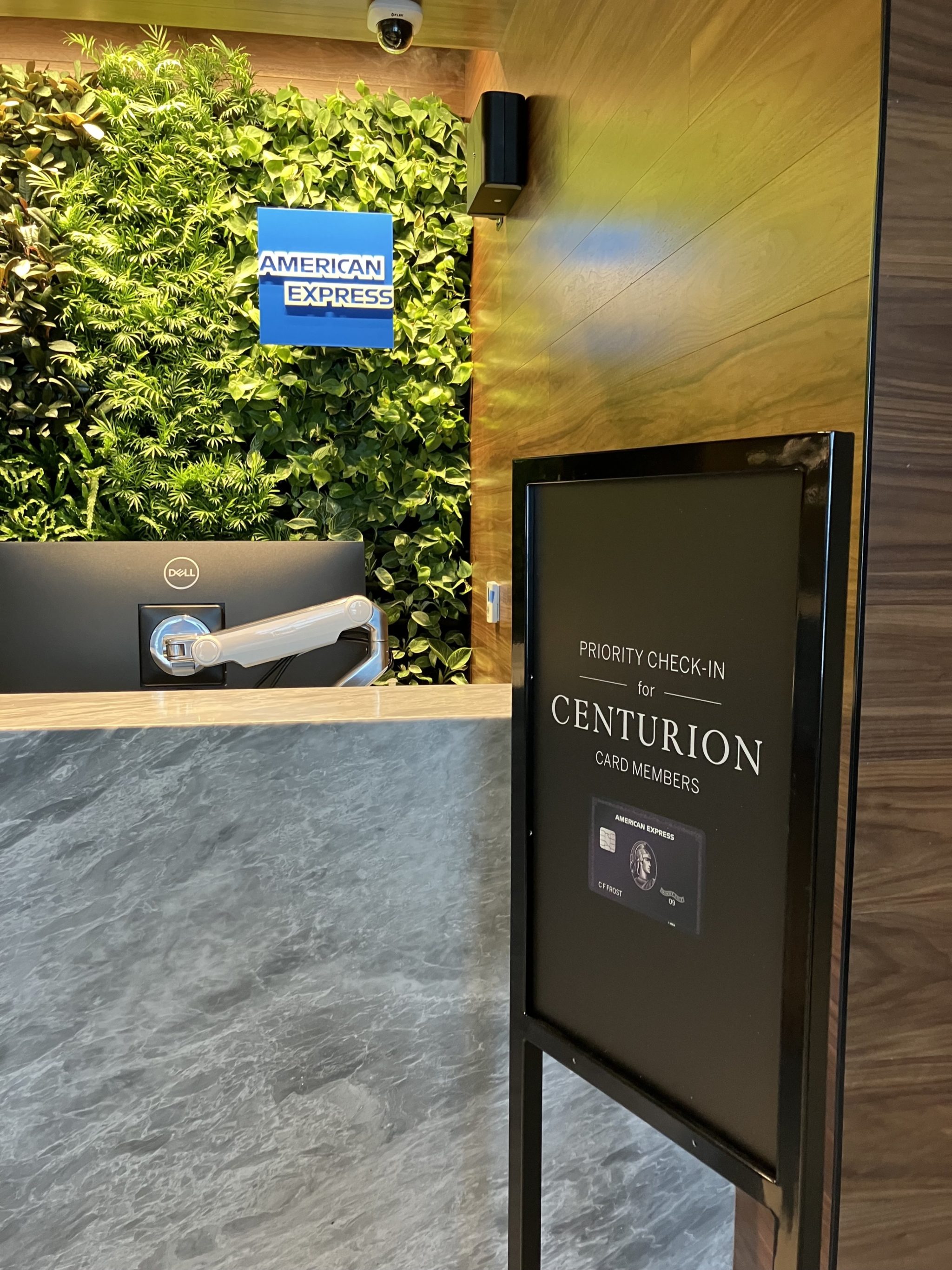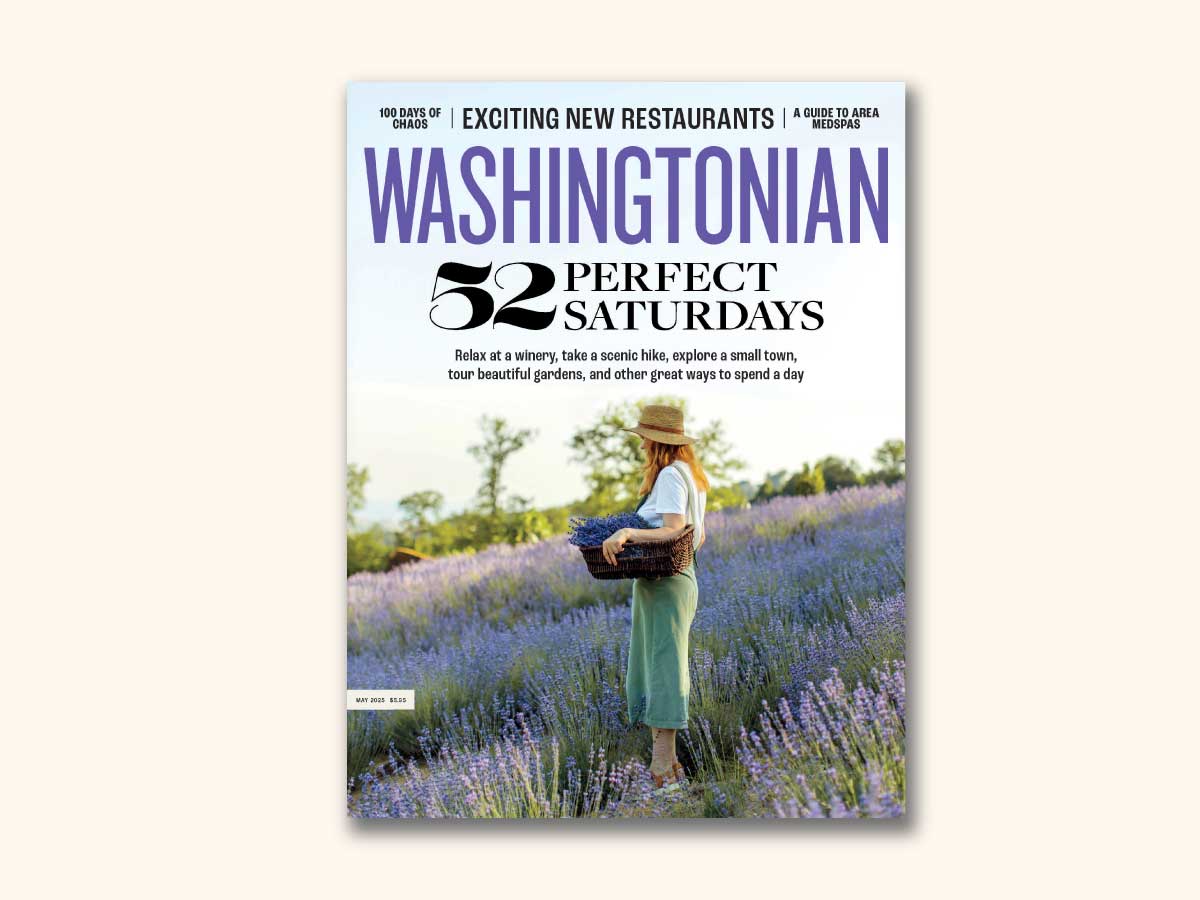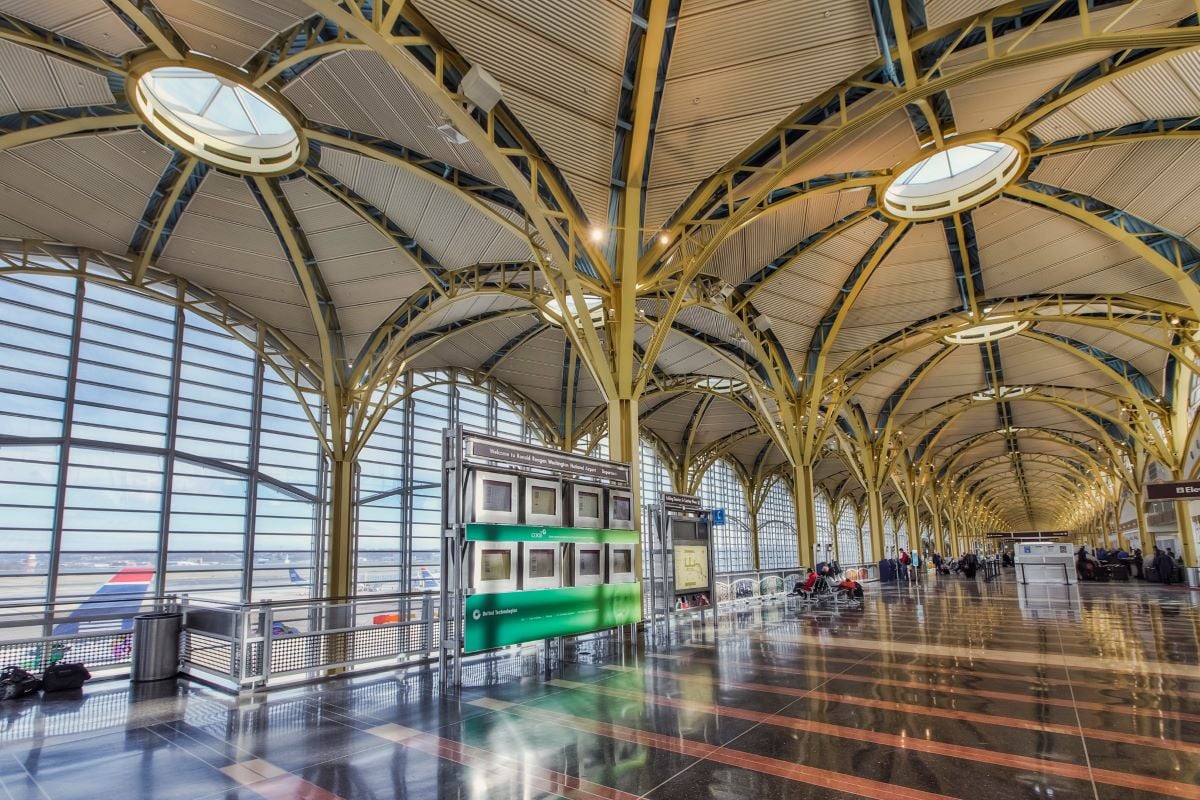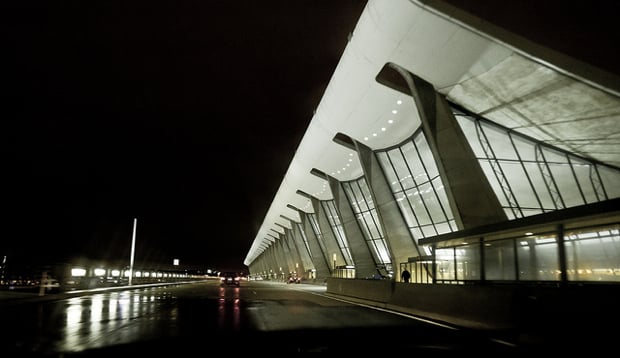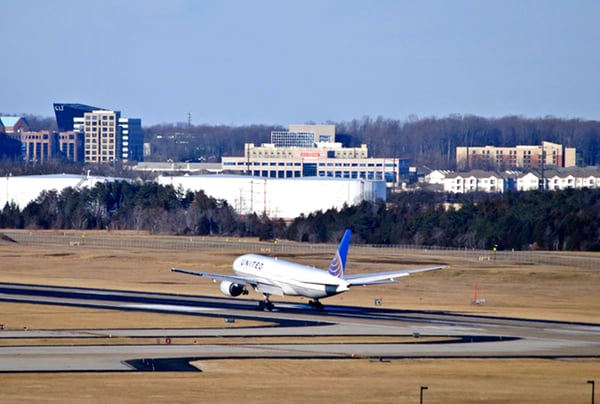I attended the press event for DCA’s new American Express Centurion Lounge because it seemed like my only chance to know, in some insignificant way, what it’s like to have a “black card”—that fabled status symbol of rappers and financiers, a physically leaden, invite-only credit card that is, according to Wikipedia, “minted out of anodized titanium, laser engraved, and accented with stainless steel.” Typical black card behavior (chartering helicopters, using a personal shopper at Saks) is not available to me on the salary of a local magazine reporter. But I hoped that, by attending the airport lounge media preview, I could at least nibble at some elite food while sitting in a plush armchair and watching the planes go by.
That is, essentially, what I did—though the experience did not have a luxury feel. The vibe of the Centurion Lounge is best described as “moderately upscale corporate office”: stiff couches and armchairs with upholstery that’s chaste and dark (navy, charcoal, ecru—no patterns, no fun). There are ample outlets, reservable conference rooms, and spriggy plants that look plastic but are actually real. The lounge is much less swank than imagined. But it’s also less exclusive than I’d thought.

Yes, black card folks can access the new Centurion Lounge, but so can hoi polloi with cards a step or two down: the Amex Platinum and Delta Reserve cards, whose annual fees are only in the neighborhood of six-to-seven hundred bucks. (The invite-only black card reportedly requires members to charge at least $500,000 per year.) As part of the card fee, one gets a strangely dark workspace that looks out onto the walkway of Terminal 2—the Lucky Buns, a kiosk selling patriotic hats—plus all-you-can-eat food and drink while you wait for your flight.
And for black card members, there’s an additional perk: an area reserved exclusively for you. Oddly, it’s just a narrow hallway with tall egg chairs that look out on the airport drop-off lane. As I sat there—on fabric that felt like commercial carpet, scratchy against my bare legs—I gazed through cement planters of scrubby grass onto a dumpster and a jumble of traffic cones. On the bright side, the black card area has its own coffee and snack station so that members don’t, as the tour guide explained, “have to traverse the lounge.”

But it’s a pity for them, honestly, because the lounge’s highlight is the dining room, whose ceiling appears to be hung with dozens of unlit lanterns, an art installation that has something to do with DC’s historical boundary stones. The dining area is bright and cheery. There, a server handed me a non-alcoholic aperitivo—delicious and bitter—and from the coffee station, I ordered a latte from an iPad, which a nozzle spat right out. From the buffet, I ate herby chicken, creamy polenta, and some kind of cherry blossom gelatin dessert. It was great. To eat and drink doesn’t cost members an additional dime.
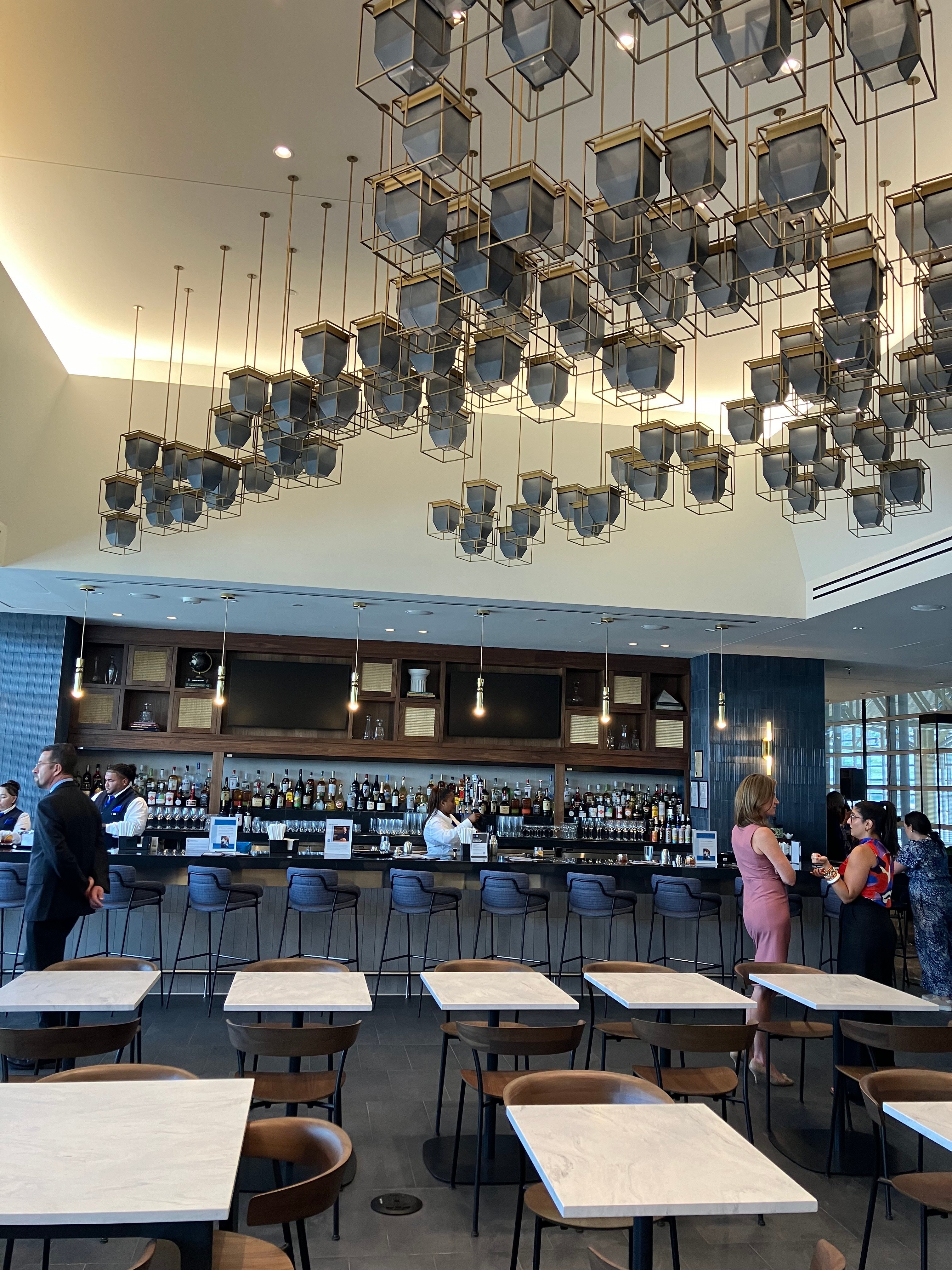
But wait: Why on earth does such a lounge exist? Why would a credit card company lease 12,000 square feet of some of the most valuable retail space in America, just to fête their members with free food and drink and WiFi and chairs? What could possibly be in it for them?
Over coffee, I chatted with a woman—a “retired influencer,” as she wryly self-described—who explained that the Amex Platinum and Chase Sapphire cards are apparently in some kind of war for vaguely affluent youngish people, the types who are jetting off to conferences and bachelorettes and yoga retreats in Palm Springs and might plausibly choose one card over the other should it make their airport experience marginally nicer. She cited a TikToker named Victoria Paris who’s apparently selling “Millennials, Zillennials, and Gen Z’s” on the merits of the airport lounge. Apparently, it’s working; “There are literally people who are airport lounge rats,” she said. “They plan their schedule around being at the lounge.”
After experiencing the Centurion Lounge, I am confident that this will never be me. Sure, the lounge is fine; I wrote this story in a corner overlooking the tarmac. It was quiet and dark. Attentive servers kept offering me water. If I had some hours to kill before a flight, I wouldn’t hate it—but honestly, I kind of like regular DCA.
I love the light at the Legal Seafoods bar, the way the sun bounces off the Potomac, and the funny Smithsonian gift shop full of stuffed pandas and gems. I like hauling my luggage beneath the vaulted metal ceiling of Terminal 2, which makes me feel—as my husband once said—like I’m inside a Fabergé egg. I like to sit at a crowded bar by my gate, sipping a beer and eavesdropping on tourists and defense contractors. We happen to have a nice airport. To enjoy it, I don’t need a premium lounge.

